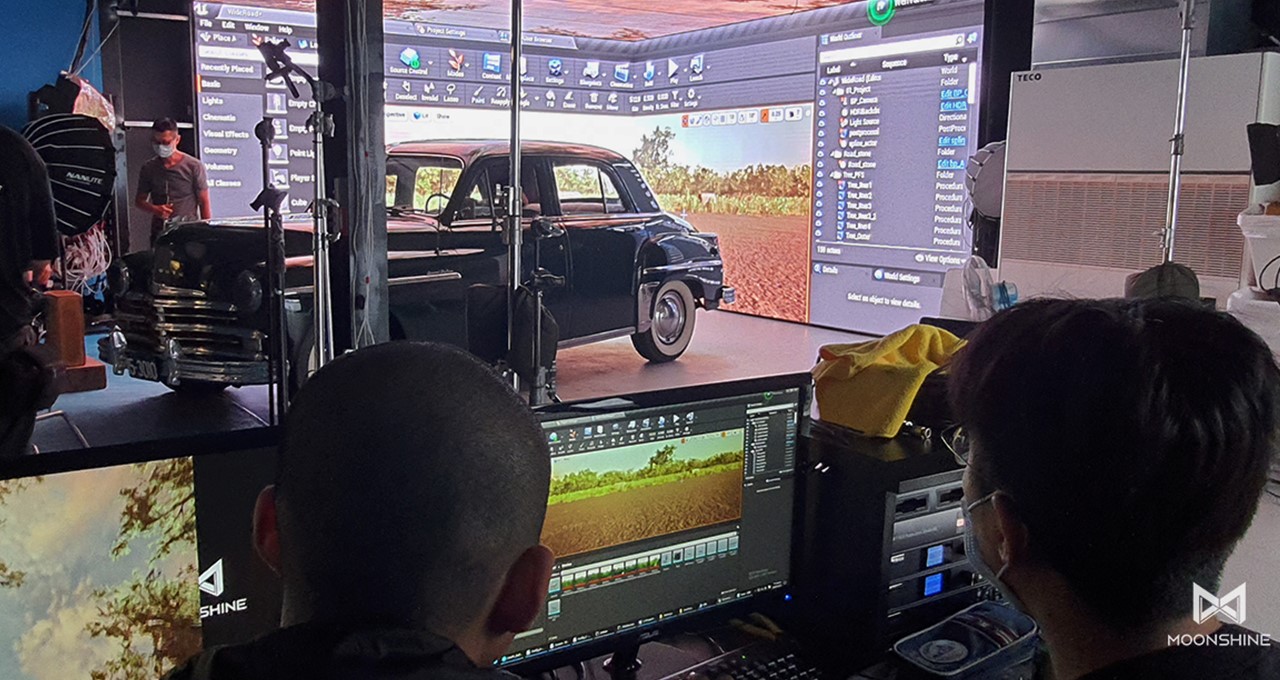When COVID-19 hit the scene, MoonShine Animation, one of Taiwan’s leading animation and visual effects companies, was already in the process of testing how its artists and designers could work remotely and still have powerful graphics performance to produce high-quality projects.
The disruption of pandemic intensified its efforts, and the company selected NVIDIA Omniverse, an open, interactive collaboration and simulation platform, to accelerate its virtual production methods and enable real-time collaboration for their remote artists.
At MoonShine’s headquarters in Nangang, most designers worked on local desktop computers, while some connected as needed to an NVIDIA GPU-accelerated server remotely.
When stay-at-home orders were announced, MoonShine quickly configured its NVIDIA EGX platform-based server using NVIDIA RTX Virtual Workstation (vWS) software to initiate virtual desktop instances (VDI).
This allowed the entire staff to securely connect from anywhere on any device. And instead of spending money to manually replace and deploy each user’s desktop, MoonShine saved twice the amount in IT expenditures using VDI.
With RTX vWS software set up and the MoonShine team working remotely, they easily accessed their virtual design systems and connected to NVIDIA Omniverse to develop content simultaneously in a shared space, with real-time photorealistic simulations.
Because Omniverse is scalable, the company dedicated server resources and easily transitioned everyone to work from home. With VDI and Omniverse up and running, MoonShine quickly sharpened its virtual production approach to serve its clients.
MoonShine Streamlines Virtual Production Methods
Virtual production weaves live-action recordings with computer-rendered effects to create a complete scene in real time. Unlike traditional green screens, a virtual production set displays content and scenes on an LED wall in the background, which allows actors to react more appropriately. And if the director wanted to change the lighting or placement of an object, the content could be digitally altered within minutes.
If the team were using traditional production methods, MoonShine founder and CEO Chia-Chi Lin estimates that a day of filming would’ve cost the company about $25,000 because of the extra equipment and post-production expenses required. But virtual production methods have reduced costs down to about $10,000, plus they can still shoot throughout the day while maintaining the appropriate lighting and environment.
“Using NVIDIA RTX GPU with NVIDIA RTX Virtual Workstation software will significantly accelerate the modern design workflow, allowing us to complete tasks more efficiently,” said Lin. “The NVIDIA Omniverse interface is straightforward and easy to understand. With the live connections between Maya and Unreal Engine, we only need to press two keys to export the model modified by Maya to Unreal Engine — such a simple and friendly method to designers.”
Virtual Production Impresses Audiences at CES
Earlier this year at CES, MoonShine used virtual production methods for ASUS Republic of Gamers’ (ROG) launch event, called “For Those Who Dare.” Viewable online, the event was also released as a video game that allows players to walk around a cyberpunk-themed environment and interact with rendered versions of ROG’s products. The immersive experience is designed to make audiences feel like they’re on the show floor of a physical convention.
Using Omniverse, MoonShine designers used Autodesk Maya for editing objects in a scene, while others used Epic Games’ Unreal Engine to reposition the objects. Omniverse received updates by both design teams from each application, and simulated a real-time, true-to-reality 3D rendering of the new scene.
Getting accurate lighting effects in a cyberpunk aesthetic is challenging, but the ray tracing in Omniverse enabled artists to immediately see the effects of light on any object, allowing them to find the desired configuration of the scene sooner.
Even with limitations spurred by the pandemic, MoonShine was able to pivot quickly and use virtual production methods to keep projects going without much delay.
Key technologies supported by NVIDIA Omniverse, like AI and ray tracing, make virtual production more practical. And as MoonShine Animation’s practice of virtual production grows, so will their vision of what’s possible.
Learn more about how NVIDIA Omniverse is accelerating workloads within the Media & Entertainment indsutry by checking out some of our GTC 21 sessions here.
